Lead Scoring 101 Guide to Targeting the Best Leads
Digital selling has grown incredibly in recent years. Your prospects go through a lengthy purchasing process and only a section of them are your potential customers. Though lead generation software can help you bring in leads, you need to find out who’s interested in your products and who has just begun the journey. This is where lead scoring helps
Lead scoring helps qualify your leads. It helps you identify the particular section of leads which is sales-ready and those sections that are still being prepared for it. Thus, it helps you in determining sales readiness and aligning the buyer stage with customer engagement.
Here is an introductory guide to lead scoring.
What is lead scoring?
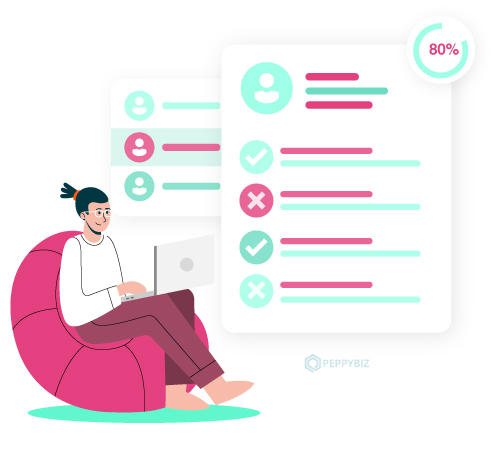
Lead scoring is a technique where each lead you generate for your business is assigned a numerical value in the form of positive or negative points for multiple attributes. These attributes can be positive such as demographics, engagement with your site and brand across the net, etc.; or negative such as removing payment information, unsubscriptions, etc.
The leading scoring process facilitates your marketing and sales teams to respond to them and move them through the sales stages and heighten the rate they turn into customers.
Why is lead scoring so important?
Lead scoring is important in many ways including
1. Time-saving
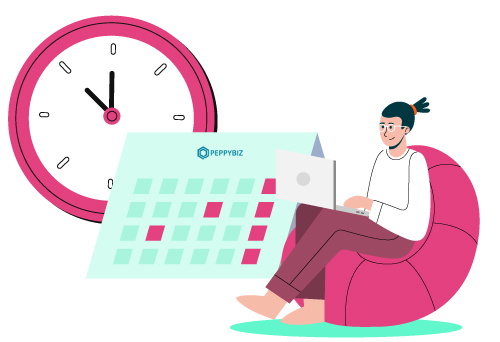
Your marketing department may be able to generate a lot of leads, but only a small percentage might have an immediate need. The remaining ones are simply looking for general information or investigating your product. So, without scoring the leads, your sales reps could waste a lot of their time and efforts on the latter category, which would disappear soon.
2. Cost-saving

Lead scoring also saves a lot of marketing costs that would otherwise be spent on low-quality leads. Now that you have qualified your leads, you can direct your advertising and marketing expenses towards qualified leads.
3. Prioritizing better leads
Lead scoring reveals the leads that have a better chance of converting. So, your marketing leads can prioritize them. This also can help in sales forecasting.
4. Determining sales readiness

Your leads won’t be ready to make a purchase right from the beginning. Lead scoring lets you determine the level of the sales readiness of your leads gradually.
5. Aligning marketing and sales teams
Lead scoring makes the qualification data of each lead available to the marketing and sales team at all times. This enables both teams to coordinate their efforts in moving leads through the sales pipeline stages.
6. Facilitating segmentation
Lead scoring helps marketing teams separate leads based on their scores. This allows you to target each segment with apt messaging to move them through the sales funnel.
7. Improving sales pitch

The lead scoring process provides your sales team with valuable information which they can use to relevantly tailor its pitch to potential buyers. This will enhance the conversion rates.
Types of Lead Scoring
Two distinctive techniques are used to score leads viz., predictive and rule-based. Here is a short description of each of those.
1. Predictive Lead Scoring
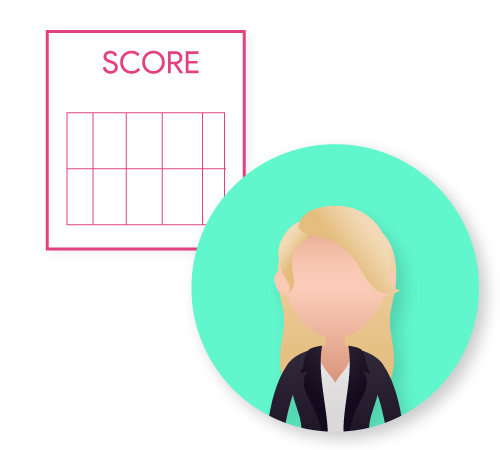
In predictive lead scoring, algorithms are used to score leads automatically based on sales or marketing data. Software is used for it. Some software can even use external data for lead scoring.
2. Rule-based Lead Scoring
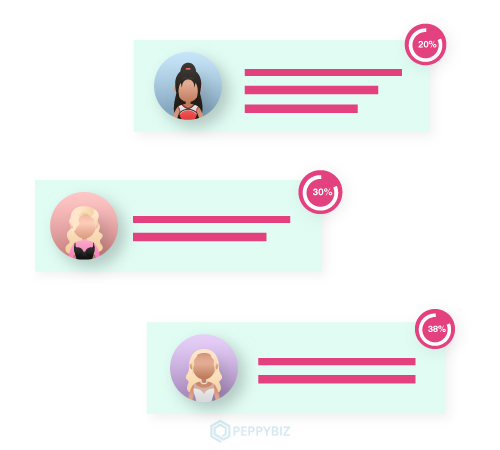
In rule-based lead scoring, a set of rules are established to score leads. You can set rules based on the available data and the functionality present in the software used. When a lead triggers a set rule, the software updates the lead score.
The rules can be based on favorable and unfavorable attributes and behaviors such as subscribing, clicking through a link, unsubscribing, exiting our sites halfway through content, etc. The score will keep changing. You can establish a minimum score to qualify a lead is ready for sales.
Difference between predictive and rule-based lead scoring
In predictive lead scoring, the software automatically scores your leads. In rule-based lead scoring, the software gives you the flexibility of establishing rules and allocating weightage to each attribute or behavior.
Using predictive lead scoring, you cannot find correlations between different parameters. With this lead scoring technique, it is also difficult to apply stage-based nurturing to move deals across different stages of the purchasing process.
However, predictive lead scoring is advantageous over rule-based lead scoring in that it can take data from different sources and analyze those to discover key indicators without your interference.
Lead Scoring Models
Lead scoring models of different types are used to take care that the values you assign to each lead reflect how precisely they agree with your offering. Each model will focus on a specific characteristic of your customer. Given below are six lead scoring models based on the kind of data you gather from the people interacting with your business.
1. Demography
If your business sells to a specific category such as women, parents of young children, IT professionals, etc., put up demographic questions in your lead forms. Your leads’ responses will tell you whether or not they are your target audience. You can minus points for those who do not fall into the category you aren’t selling to and eliminate them from your sales team’s queue.
2. Company
B2B organizations who are interested in selling to B2Bs, B2Cs, or companies of a specific type, size, or industry can use their lead forms to ask relevant questions. This will help you find out your target audience by assigning points to leads who fit in your category.
3. Email engagement
Owing to the many benefits of email marketing, most brands go for it. However, you need to know how interested your email subscriber is in purchasing from you. For this, you need to look into your email marketing analytics and assign a higher score to those subscribers who opened and clicked through your emails, especially high-value ones. This will help your sales team know the audience on who they have to focus more.
4. Online behavior
The way a lead interacts and engages with your brand online can give you loads of info on their level of interest in buying from you. Get to know the pages visitors, the number of pages visited, the free trial requests made, the email subscriptions made, and the number of downloads by each of your leads. Assign more points to high-value pages. Now score your leads based on their online behavior. You may be minus points for those leads who have ceased to visit your site.
5. Social engagement
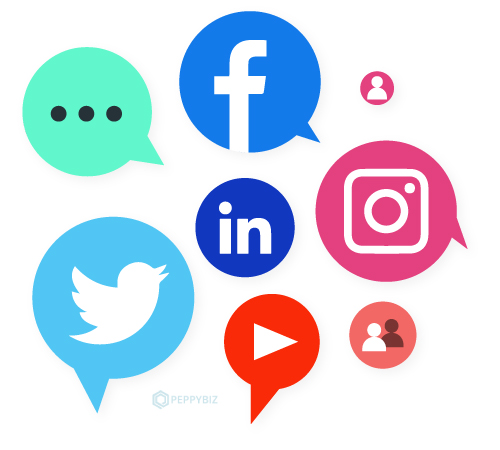
The degree of engagement of a lead with your brand on social media can tell you how interested he or she is in your brand. The number of times they clicked through your brand’s posts and tweets, the number of times they shared posts and retweeted counts, etc. are taken into account for lead scoring under this model.
6. Spam detection
Lead scoring for spam detection involves assigning negative scores to leads who filled your forms in a spammy manner. You can consider it spammy if the first letter of the lead’s first or last name or the company name is not capitalized or if the form fields are filled by typing four or more letters found side-by-side on the keyboard.
Designing a Lead Scoring System
The way how one company scores its leads will differ from the way another does it. Since there is no one-size-fits-all solution, your company should have its scoring system designed. It should include your targets, objectives, and goals. Here are a few instances of things to take into account while designing your lead scoring system.
1. Come up with buyer personas
Before you start scoring your leads, you need to have a good idea of the attributes that make a prospect a right fit for your products and/or services. This is where buyer personas are helpful. The data collected from various online sources are clubbed together to derive each buyer’s profile. The more buyer personas you have, the more comprehensive will be your comprehension of customers, and consequently, the more accurate will be your lead scoring efforts.
2. Determine the parameters to be scored
Now that you know your buyer base, decide upon the attributes based on which you will score your leads. As mentioned earlier, your lead scoring criteria can be based on information related to demography, company, email engagement, online behavior, social engagement, and/spam detection.
3. Allocate values
Determine those actions and traits that eventually lead to the closing of a deal, and accordingly allocate numerical values to each of those. For instance, leads who subscribe to your emails are more likely to buy from you than those who simply read your blogs. So, assign 10 points to the former and 2 points to the latter. Your sales team can give you valuable insight into the parameters that qualify a person to be a customer.
4. Ascertain the threshold value that qualifies a lead to be sales-ready
Now you need to find out the range of scores that indicates “sales-readiness”. This would initially require some testing and analysis. So, ask your sales team to follow up leads equally, irrespective of their score for a pre-set test period. Upon the completion of the test period, evaluate your lead score. Determine the clear cut-off point where leads cease from becoming customers.
5. Employ sales and marketing automation
Manual lead scoring is time-consuming, error-prone, and impossible. So, use a sales and marketing automation tool for it. You just have to enter your scoring criteria, and the software will do the rest. It will score your leads and update their scores as they keep changing. This will help you enjoy the fruits of lead scoring without putting in loads of effort and time into it.
Conclusion
Lead scoring is a technique that helps you evaluate your leads for their sales readiness and align the buyer stage with customer engagement. It facilitates your marketing and sales teams to aptly respond to your leads and move them through the sales stages.
This heightens the rate at which they turn into customers. Lead scoring saves time and cost, prioritizes better leads, determines sales readiness, aligns marketing and sales teams, facilitates segmentation, and improves sales pitch.
Lead scoring models can be predictive or rule-based and the scoring criteria can be based on demography, company, email and social engagement, online behaviors, and or spam detection. By employing the best practices for designing a lead scoring system and using the right marketing and sales automation tool, you can reap the benefits of lead scoring.


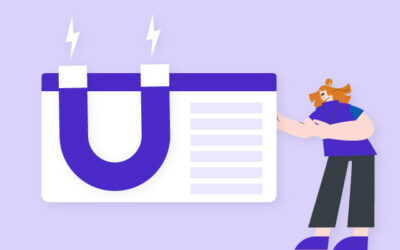

Marketing strategies are evolving day by day and staying up to recent trends helps a lot. These tools and tips mentioned here are the crucial part to have for any business. Good blog, keep sharing!